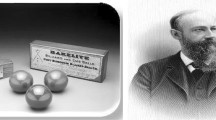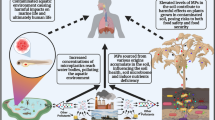Abstract
Polycyclic aromatic hydrocarbons (PAH) are toxic pollutants widely distributed in the environment due to natural and anthropogenic processes. In order to mitigate tar oil contaminations with PAH, research on improving bioremediation approaches, which are sometimes inefficient, is needed. However, the knowledge on the fate of PAH-derived carbon and the microbial degraders in particular in compost-supplemented soils is still limited. Here we show the PAH carbon turnover mass balance in microcosms with soil-compost mixtures or in farmyard fertilized soil using [13C6]-pyrene as a model PAH. Complete pyrene degradation of 100 mg/kg of soil was observed in all supplemented microcosms within 3 to 5 months, and the residual 13C was mainly found as carbon converted to microbial biomass. Long-term fertilization of soil with farmyard manure resulted in pyrene removal efficiency similar to compost addition, although with a much longer lag phase, higher mineralization, and lower carbon incorporation into the biomass. Organic amendments either as long-term manure fertilization or as compost amendment thus play a key role in increasing the PAH-degrading potential of the soil microbial community. Phospholipid fatty acid stable isotope probing (PLFA-SIP) was used to trace the carbon within the microbial population and the amount of biomass formed from pyrene degradation. The results demonstrate that complex microbial degrader consortia rather than the expected single key players are responsible for PAH degradation in organic-amended soil.



Similar content being viewed by others
References
Altermann M, Rinklebe J, Merbach I, Körschens M, Langer U, Hofmann B (2005) Chernozem—soil of the year 2005. J Plant Nutr Soil Sci 168:725–740. doi:10.1002/jpln.200521814
Amelung W, Brodowski S, Sandhage-Hofmann A, Bol R (2008) Combining biomarker with stable isotope analyses for assessing the transformation and turnover of soil organic matter. Adv Agron 100:155–250. doi:10.1016/s0065-2113(08)00606-8
Amir S, Hafidi M, Merlina G, Hamdi H, Revel JC (2005) Fate of polycyclic aromatic hydrocarbons during composting of lagooning sewage sludge. Chemosphere 58:449–458. doi:10.1016/j.chemosphere.2004.09.039
Antizar-Ladislao B, Lopez-Real J, Beck AJ (2005) In-vessel composting—bioremediation of aged coal tar soil: effect of temperature and soil/green waste amendment ratio. Environ Int 31:173–178. doi:10.1016/j.envint.2004.09.012
Atagana HI (2004) Co-composting of PAH-contaminated soil with poultry manure. Lett Appl Microbiol 39:163–168. doi:10.1111/j.1472-765X.2004.01554.x
ATSDR (1995) Toxicological profile for polycyclic aromatic hydrocarbons. US Department Of Health And Human Services, Public Health Service, Atlanta
Bamforth SM, Singleton I (2005) Bioremediation of polycyclic aromatic hydrocarbons: current knowledge and future directions. J Chem Technol Biotechnol 80:723–736. doi:10.1002/jctb.1276
Berns A, Vinken R, Bertmer M, Breitschwerdt A, Schäffer A (2005) Use of 15N-depleted artificial compost in bound residue studies. Chemosphere 59:649–658. doi:10.1016/j.chemosphere.2004.10.027
Bligh EG, Dyer WJ (1959) A rapid method of total lipid extraction and purification. Can J Biochem Physiol 37:911–917. doi:10.1139/o59-099
Cajthaml T, Bhatt M, Šašek V, Matějů V (2002) Bioremediation of PAH-contaminated soil by composting: a case study. Folia Microbiol 47:696–700
Carlstrom CJ, Tuovinen OH (2003) Mineralization of phenanthrene and fluoranthene in yardwaste compost. Environ Pollut 124:81–91
Cerniglia CE (1993) Biodegradation of polycyclic aromatic hydrocarbons. Curr Opin Biotechnol 4:331–338. doi:10.1016/0958-1669(93)90104-5
Chaineau CH, Morel JL, Oudot J (1995) Microbial degradation in soil microcosms of fuel oil hydrocarbons from drilling cuttings. Environ Sci Technol 29:1615–1621. doi:10.1021/es00006a027
Cheng KY, Wong JWC (2008) Fate of 14C-pyrene in soil–plant system amended with pig manure compost and Tween 80: a growth chamber study. Bioresour Technol 99:8406–8412. doi:10.1016/j.biortech.2008.02.036
Contreras-Ramos SM, Álvarez-Bernal D, Dendooven L (2009) Characteristics of earthworms (Eisenia fetida) in PAHs contaminated soil amended with sewage sludge or vermicompost. Appl Soil Ecol 41:269–276. doi:10.1016/j.apsoil.2008.11.008
David F, Klee MS (2009) Fast analysis of polynuclear aromatic hydrocarbons using agilent low thermal mass (LTM) GC/MS and capillary flow technology QuickSwap for backflush. Agilent Technologies, Appl Note Environ
Eschenbach A, Kästner M, Bierl R, Schaefer G, Mahro B (1994) Evaluation of a new, effective method to extract polycyclic aromatic hydrocarbons from soil samples. Chemosphere 28:683–692. doi:10.1016/0045-6535(94)90219-4
Frostegård Å, Tunlid A, Bååth E (2011) Use and misuse of PLFA measurements in soils. Soil Biol Biochem 43:1621–1625. doi:10.1016/j.soilbio.2010.11.021
Ghanem A, D’Orazio V, Senesi N (2013) Effects of compost addition on pyrene removal from soil cultivated with three selected plant species. Clean: Soil, Air, Water 41:1222–1228. doi:10.1002/clen.201200601
Green CT, Scow KM (2000) Analysis of phospholipid fatty acids (PLFA) to characterize microbial communities in aquifers. Hydrogeol J 8:126–141. doi:10.1007/s100400050013
Gutierrez-Zamora M-L, Manefield M (2010) An appraisal of methods for linking environmental processes to specific microbial taxa. Rev Environ Sci Biotechnol 9:153–185. doi:10.1007/s11157-010-9205-8
Haderlein A, Legros R, Ramsay B (2001) Enhancing pyrene mineralization in contaminated soil by the addition of humic acids or composted contaminated soil. Appl Microbiol Biotechnol 56:555–559. doi:10.1007/s002530000520
Haderlein A, Legros R, Ramsay BA (2006) Pyrene mineralization capacity increases with compost maturity. Biodegradation 17:293–302. doi:10.1007/s10532-005-4217-8
Hafidi M, Amir S, Jouraiphy A, Winterton P, El Gharous M, Merlina G, Revel J-C (2008) Fate of polycyclic aromatic hydrocarbons during composting of activated sewage sludge with green waste. Bioresour Technol 99:8819–8823. doi:10.1016/j.biortech.2008.04.044
Haimi J (2000) Decomposer animals and bioremediation of soils. Environ Pollut 107:233–238. doi:10.1016/s0269-7491(99)00142-6
Hamdi H, Manusadžianas L, Aoyama I, Jedidi N (2006) Effects of anthracene, pyrene and benzo[a]pyrene spiking and sewage sludge compost amendment on soil ecotoxicity during a bioremediation process. Chemosphere 65:1153–1162. doi:10.1016/j.chemosphere.2006.03.065
Hamdi H, Benzarti S, Manusadžianas L, Aoyama I, Jedidi N (2007) Solid-phase bioassays and soil microbial activities to evaluate PAH-spiked soil ecotoxicity after a long-term bioremediation process simulating landfarming. Chemosphere 70:135–143. doi:10.1016/j.chemosphere.2007.06.043
Johnsen AR, Winding A, Karlson U, Roslev P (2002) Linking of microorganisms to phenanthrene metabolism in soil by analysis of 13C-labeled cell lipids. Appl Environ Microbiol 68:6106–6113. doi:10.1128/aem.68.12.6106-6113.2002
Kästner M (2000) Degradation of aromatic and polyaromatic compounds. In: Rehm H-J, Reed G, Pühler A, Stadler P (eds) Biotechnology, 2nd edn, Vol 11b; Environmental Processes. Wiley-VCH, Weinheim, pp. 211–239
Kästner M, Mahro B (1996) Microbial degradation of polycyclic aromatic hydrocarbons in soils affected by the organic matrix of compost. Appl Microbiol Biotechnol 44:668–675
Kästner M, Lotter S, Heerenklage J, Breuer-Jammali M, Stegmann R, Mahro B (1995) Fate of 14C-labeled anthracene and hexadecane in compost-manured soil. Appl Microbiol Biotechnol 43:1128–1135
Kästner M, Streibich S, Beyrer M, Richnow HH, Fritsche W (1999) Formation of bound residues during microbial degradation of [14C]anthracene in soil. Appl Environ Microbiol 65:1834–1842
Lau KL, Tsang YY, Chiu SW (2003) Use of spent mushroom compost to bioremediate PAH-contaminated samples. Chemosphere 52:1539–1546. doi:10.1016/s0045-6535(03)00493-4
Loick N, Hobbs PJ, Hale MDC, Jones DL (2009) Bioremediation of poly-aromatic hydrocarbon (PAH)-contaminated soil by composting. Crit Rev Environ Sci Technol 39:271–332. doi:10.1080/10643380701413682
Marchal G, Smith KEC, Rein A, Winding A, Trapp S, Karlson UG (2013) Comparing the desorption and biodegradation of low concentrations of phenanthrene sorbed to activated carbon, biochar and compost. Chemosphere 90:1767–1778. doi:10.1016/j.chemosphere.2012.07.048
Megharaj M, Ramakrishnan B, Venkateswarlu K, Sethunathan N, Naidu R (2011) Bioremediation approaches for organic pollutants: a critical perspective. Environ Int 37:1362–1375. doi:10.1016/j.envint.2011.06.003
Miltner A, Richnow H-H, Kopinke F-D, Kästner M (2004) Assimilation of CO2 by soil microorganisms and transformation into soil organic matter. Org Geochem 35:1015–1024. doi:10.1016/j.orggeochem.2004.05.001
Montoneri E, Boffa V, Savarino P, Tambone F, Adani F, Micheletti L, Gianotti C, Chiono R (2009) Use of biosurfactants from urban wastes compost in textile dyeing and soil remediation. Waste Manag 29:383–389. doi:10.1016/j.wasman.2008.01.011
Nowak KM, Miltner A, Gehre M, Schäffer A, Kästner M (2011) Formation and fate of bound residues from microbial biomass during 2,4-D degradation in soil. Environ Sci Technol 45:999–1006. doi:10.1021/es103097f
Nowak KM, Girardi C, Miltner A, Gehre M, Schäffer A, Kästner M (2013) Contribution of microorganisms to non-extractable residue formation during biodegradation of ibuprofen in soil. Sci Total Environ 445-446:377–384. doi:10.1016/j.scitotenv.2012.12.011
Oksanen J, Blanchet FG, Kindt R, Legendre P, Minchin PR, O’Hara RB, Simpson GL, Solymos P, Stevens MHH, Wagner H (2013) Vegan: community ecology package. R package version 2.0-10. http://CRAN.R-project.org/package=vegan
Ottow JCG, Bidlingmaier W (1997) Umweltbiotechnologie. G. Fischer, Stuttgart [u.a.]
Peng J, Zhang Y, Su J, Qiu Q, Jia Z, Zhu Y-G (2013) Bacterial communities predominant in the degradation of 13C4-4,5,9,10-pyrene during composting. Bioresour Technol 143:608–614. doi:10.1016/j.biortech.2013.06.039
Petersen SO, Henriksen K, Mortensen GK, Krogh PH, Brandt KK, Sørensen J, Madsen T, Petersen J, Grøn C (2003) Recycling of sewage sludge and household compost to arable land: fate and effects of organic contaminants, and impact on soil fertility. Soil Tillage Res 72:139–152. doi:10.1016/s0167-1987(03)00084-9
Plaza C, Xing B, Fernández JM, Senesi N, Polo A (2009) Binding of polycyclic aromatic hydrocarbons by humic acids formed during composting. Environ Pollut 157:257–263. doi:10.1016/j.envpol.2008.07.016
R Core Team (2013) R: a language and environment for statistical computing. http://www.R-project.org
Reid BJ, Fermor TR, Semple KT (2002) Induction of PAH-catabolism in mushroom compost and its use in the biodegradation of soil-associated phenanthrene. Environ Pollut 118:65–73. doi:10.1016/s0269-7491(01)00239-1
Richnow H (2000) Tracing the transformation of labelled [1-13C]phenanthrene in a soil bioreactor. Environ Pollut 108:91–101. doi:10.1016/s0269-7491(99)00205-5
Romantschuk M, Sarand I, Petänen T, Peltola R, Jonsson-Vihanne M, Koivula T, Yrjälä K, Haahtela K (2000) Means to improve the effect of in situ bioremediation of contaminated soil: an overview of novel approaches. Environ Pollut 107:179–185. doi:10.1016/s0269-7491(99)00136-0
Šašek V, Bhatt M, Cajthaml T, Malachová K, Lednická D (2003) Compost-mediated removal of polycyclic aromatic hydrocarbons from contaminated soil. Arch Environ Contam Toxicol 44:336–342. doi:10.1007/s00244-002-2037-y
Schoug Å, Fischer J, Heipieper HJ, Schnürer J, Håkansson S (2008) Impact of fermentation pH and temperature on freeze-drying survival and membrane lipid composition of Lactobacillus coryniformis Si3. J Ind Microbiol Biotechnol 35:175–181. doi:10.1007/s10295-007-0281-x
Semple KT, Reid BJ, Fermor TR (2001) Impact of composting strategies on the treatment of soils contaminated with organic pollutants. Environ Pollut 112:269–283
Smith KEC, Thullner M, Wick LY, Harms H (2009) Sorption to humic acids enhances polycyclic aromatic hydrocarbon biodegradation. Environ Sci Technol 43:7205–7211. doi:10.1021/es803661s
Srogi K (2007) Monitoring of environmental exposure to polycyclic aromatic hydrocarbons: a review. Environ Chem Lett 5:169–195. doi:10.1007/s10311-007-0095-0
Vila J, Tauler M, Grifoll M (2015) Bacterial PAH degradation in marine and terrestrial habitats. Curr Opin Biotechnol 33:95–102. doi:10.1016/j.copbio.2015.01.006
Wick LY, Pelz O, Bernasconi SM, Andersen N, Harms H (2003) Influence of the growth substrate on ester-linked phospho- and glycolipid fatty acids of PAH-degrading Mycobacterium sp. LB501T. Environ Microbiol 5:672–680. doi:10.1046/j.1462-2920.2003.00455.x
Winquist E, Björklöf K, Schultz E, Räsänen M, Salonen K, Anasonye F, Cajthaml T, Steffen KT, Jørgensen KS, Tuomela M (2014) Bioremediation of PAH-contaminated soil with fungi—from laboratory to field scale. Int Biodeterior Biodegrad 86:238–247. doi:10.1016/j.ibiod.2013.09.012
Wong JCW, Wan CK, Fang M (2002) Pig manure as a co-composting material for biodegradation of PAH-contaminated soil. Environ Technol 23:15–26. doi:10.1080/09593332508618438
Wu G, Kechavarzi C, Li X, Sui H, Pollard SJT, Coulon F (2013) Influence of mature compost amendment on total and bioavailable polycyclic aromatic hydrocarbons in contaminated soils. Chemosphere 90:2240–2246. doi:10.1016/j.chemosphere.2012.10.003
Yuan SY, Su LM, Chang BV (2009) Biodegradation of phenanthrene and pyrene in compost-amended soil. J Environ Sci Health, Part A: Environ Sci Eng 44:648–653. doi:10.1080/10934520902847638
Zelles L (1999) Fatty acid patterns of phospholipids and lipopolysaccharides in the characterisation of microbial communities in soil: a review. Biol Fertil Soils 29:111–129. doi:10.1007/s003740050533
Zhang S, Wan R, Wang Q, Xie S (2011a) Identification of anthracene degraders in leachate-contaminated aquifer using stable isotope probing. Int Biodeterior Biodegrad 65:1224–1228. doi:10.1016/j.ibiod.2011.10.002
Zhang Y, Zhu Y-G, Houot S, Qiao M, Nunan N, Garnier P (2011b) Remediation of polycyclic aromatic hydrocarbon (PAH) contaminated soil through composting with fresh organic wastes. Environ Sci Pollut Res 18:1574–1584. doi:10.1007/s11356-011-0521-5
Acknowledgments
This study was funded by the European Union project “Molecular Approaches and MetaGenomic Investigations for optimizing Clean-up of PAH contaminated sites” (MAGICPAH) under FP7-KBBE (245226), within the seventh framework program. The authors wish to thank Kerstin Puschendorf for the TOC analysis as well as Ursula Günther, Falk Bratfisch, and Matthias Gehre of the Department of Isotope Biogeochemistry, UFZ, Germany, for their assistance in the stable isotope measurements. The soil samples for the experiments were kindly provided by Ines Merbach from the UFZ experimental station in Bad Lauchstädt, Germany.
Conflict of interest
The authors declare that they have no competing interests.
Compliance with ethical standards
No humans or animals were involved in the experiments.
Author information
Authors and Affiliations
Corresponding author
Electronic Supplementary Materials
ESM 1
(PDF 1.16 Mb)
Rights and permissions
About this article
Cite this article
Adam, I.K.U., Miltner, A. & Kästner, M. Degradation of 13C-labeled pyrene in soil-compost mixtures and fertilized soil. Appl Microbiol Biotechnol 99, 9813–9824 (2015). https://doi.org/10.1007/s00253-015-6822-8
Received:
Revised:
Accepted:
Published:
Issue Date:
DOI: https://doi.org/10.1007/s00253-015-6822-8




